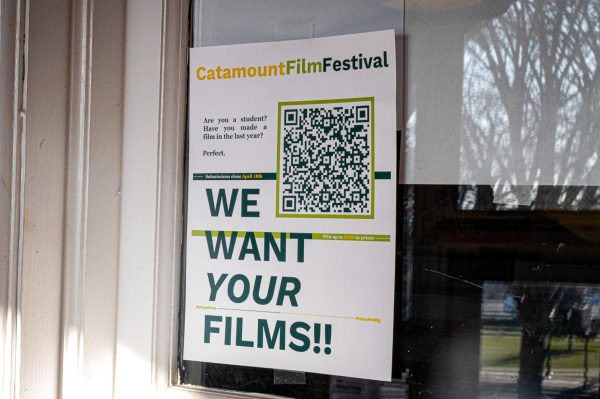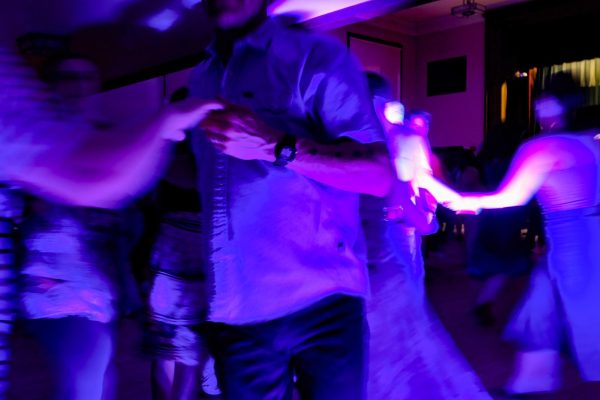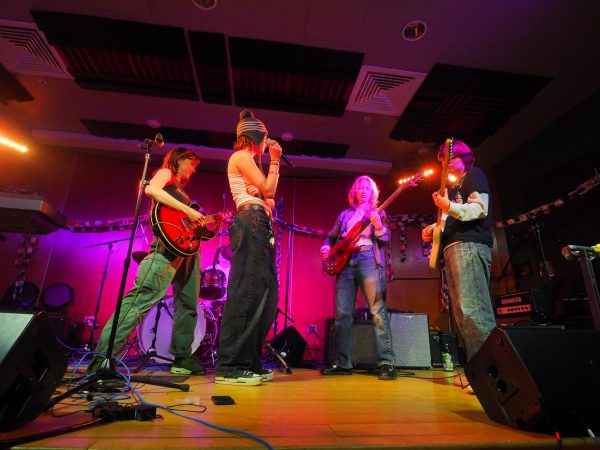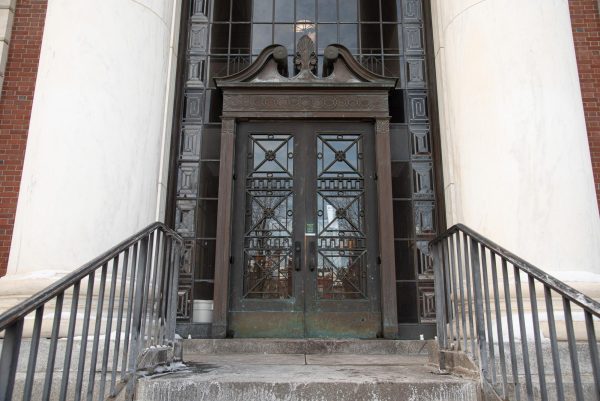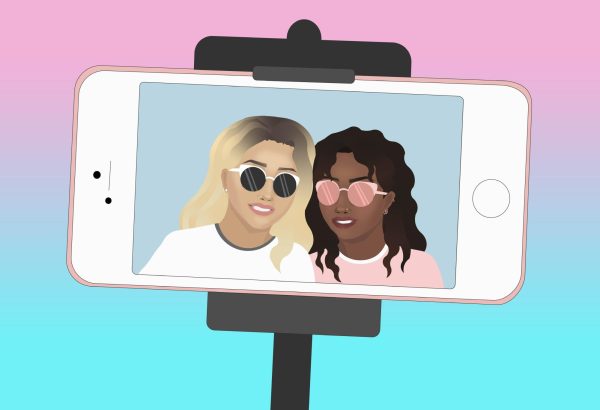Millennials nostalgic for trends of the past
Millennials — people born in the late-1980s to mid-1990s — are often deemed future-oriented and current event-obsessed.
But the same group is also suffering from a serious case of nostalgia, and it appears to be chronic. The side effects can be seen in wardrobes, music playlists and Netflix queues, and they don’t appear to be going away anytime soon.
With a close look, styles from the ’70s to the ’90s can be seen on many students all over campus every day.
Those bellbottoms, Penny Lane faux fur coats and circular mirrored sunglasses were all snagged from the ’70s, not to mention the beloved Birkenstocks.
The ’80s have come back to the future in the form of denim jackets, off-the-shoulder tops, athleisure and scrunchies.
Perhaps most fondly remembered of all, however, is the style of the ’90s. Chokers, flannels, Doc Martens, dark lipstick and normcore are absolutely everywhere.
As for the early 2000s—well, hopefully the days of Juicy Couture tracksuits and chunky zebra-stripe highlights can be left behind.
VHS tapes may have been traded in for online streaming, but Millennials still want to binge-watch things from before the days of Netflix. Entertainment companies have been catering to this sentimental side by creating revival shows like “Fuller House,” “Gilmore Girls: A Year in the Life” and a new series of “Twin Peaks.”
Pixar Studios has recently blessed us with highly-anticipated flashbacks to childhood such as “Monsters University,” “Finding Dory” and soon, “The Incredibles 2.” What’s more, period shows like “Mad Men,” “The Get Down” and “Stranger Things” have also had major success with the college crowd, making some yearn for a time they weren’t even alive for.
Many are even gaming returning to simplicity in gaming, as evidenced this past April with the debut of the app Pokémon Go, a game with characters from the ’90s that quickly went viral. Revamped turntables and vinyl records allow for listening of the newest releases in the old-fashioned way.
Those who miss drinking the milk left behind at the bottom of a bowl of sugary cereal can head to eateries like Momofuku Milk Bar and Kellogg’s Café, which both base their menus around it with options like cereal milk ice cream.
The explanation for all these so-called new products is that companies have noticed an affinity for the old and are using nostalgia marketing as a strategy to keep consumers spending.
“I know it’s a marketing scam,” sophomore Rebecca Grant said, “but I’ll still buy [products that invoke nostalgia] anyway.”
Associate psychology professor Keith Burt believes that the simplicity and comfort of childhood can explain the affinity for the past.
“An increased uncertainty about the wider world, the economy, safety and well-being might lead to an extension of nostalgia to trends that predate one’s birth,” he said.
Money may not be able to buy happiness, but it can buy the warm and fuzzies.
The obsession with the old can’t be all that bad. In fact, a 2008 study from researchers at the University of Southampton, University of Missouri and North Dakota State University found that nostalgia has generally positive effects, including an increased self-esteem as well as social connectedness.
So whether nostalgia-driven products are used as coping mechanisms to deal with troubled times or simply as fashion statements, they seem to be worth incorporating into the modern millennial’s budget.


